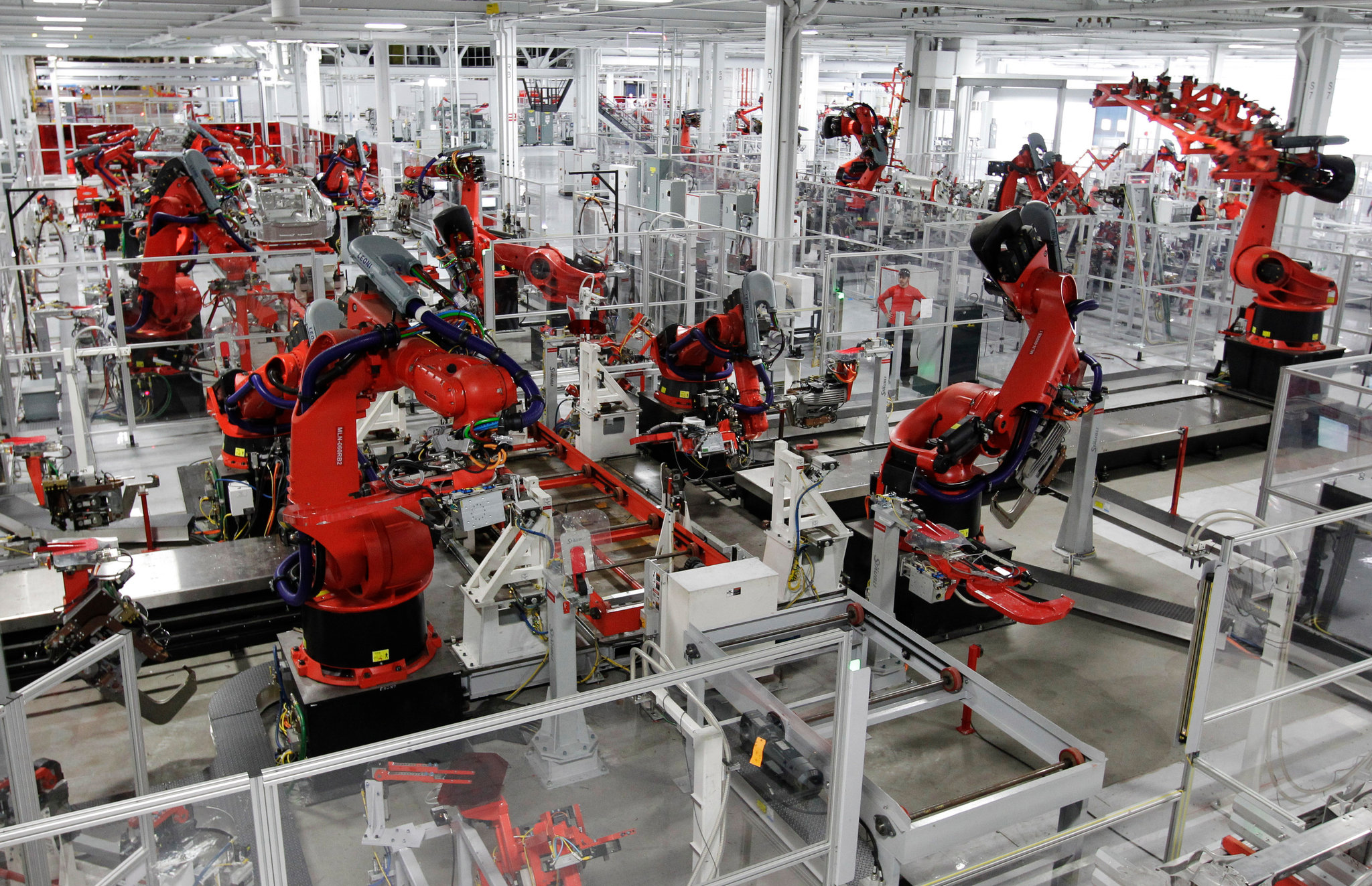The Robot Future Won't Need a Lot More Electricity

EghtesadOnline: As robots come to dominate manufacturing, and automation eats its way into more business processes, societies are beginning to address the future of work for humans. Another issue -- for the power industry in particular -- is whether programmable machines might also significantly increase electricity use.
In the wealthy countries of Asia, robots have already arrived. South Korea, Singapore and Japan are the three most automated manufacturing economies, according to the International Federation of Robotics. In Korea, 1 manufacturing worker in 21 is a robot. The U.S., Taiwan and five wealthy European countries fill out the top 10:
The Robots Are Coming (or Are Already Here)
Since robots run on electricity, as do other automated processes for moving materials around the factory floor, an electric utility executive might reasonably hope that they will soon drive greater electricity demand. But a look at the past 10 years of electricity consumption in these top 10 countries suggests they might not, Bloomberg reported.
Four countries on the list have increased their consumption since 2006 -- Korea's power use is up almost 40 percent and Singapore's is up 30 percent. But Taiwan's use is up only modestly. And the U.S., by far the largest electricity consumer in the group, is up by just 1 percent.
Some Industrial Countries Increased Usage ...
Electricity consumption by country (rebased 2006=100)
As for the European countries, every one has seen its electricity consumption fall.
... While Other Industrial Countries Did Not
Electricity consumption by country (rebased 2006=100)
It’s not as if any of these countries are deindustrialized. Germany has a heavily industrial economy, and its producers are automating as much as possible. Siemens, for one, has boosted production at one factory ninefold in three decades without appreciably increasing its workforce. Yet, as a whole, Germany uses 5 percent less electricity than it did 10 years ago.
To be sure, this is correlation, not evidence, that increasing automation lowers energy use, and there are many other variables in the mix.
Where robots require significant electrical load, they create an economic incentive to conserve electricity elsewhere -- in lighting and heating, for example, which serve humans more than machines. The potential for near-total automation -- and with it the “lights-out factory” devoid of human labor -- would greatly reduce or eliminate the systems designed to keep people comfortable. In Google’s data centers, the temperature is 80 degrees Fahrenheit (27 degrees Celsius) in the “cold aisle” sections where people work, and 120 degrees elsewhere. And the ambient noise is so loud, humans can't enter without ear protection. Continue the process of automation, and more energy-consuming systems disappear. No people means no refrigeration, no cooking, no TVs in the break room.
Every manufacturing company is looking for low to zero to negative growth in electricity use. So while intensive and pervasive industrial automation must be a tempting narrative for power company executives looking for new sources of demand, it's more likely that the robot era will arrive with no need for extra energy.
Weekend reads
- Nine U.S. states (representing 38 percent of U.S. gross domestic product and 33 percent of the population) have declared “We Are Still In” on the Paris climate accord. So have 125 cities, 183 colleges and universities, and 902 businesses and investors.
- Economist Jeffrey Sachs says the U.S. withdrawal from the Paris deal “is not just dangerous for the world; it is also sociopathic.”
- Most Americans oppose President Donald Trump's withdrawal from the Paris agreement, a Washington Post-ABC News poll finds.
- Two Harvard Business School professors see the recent Exxon Mobil shareholder resolution to disclose climate change impacts as “a monumental event.”
- U.S. property and casualty insurers are “mostly silent” on the U.S. exiting the Paris accord. Their European colleagues are much more vocal.
- U.S. airlines flew 7 percent more passengers in 2016 than they did a decade earlier – and consumed 11 percent less fuel.
- In New York City, benchmarking and disclosure reduced building energy consumption 14 percent in four years.
- U.S. sales-weighted new vehicle fuel economy is (still) flat since late 2014.
- Prince (yes, that Prince) was a secret patron of solar power in Oakland, California.
- More bicycles entered Copenhagen last year than cars, and now the Danish capital is installing information screens to prevent bike traffic jams.
- The world’s biggest mining company is experimenting with fully automated cargo ships to transport iron ore and coal.


